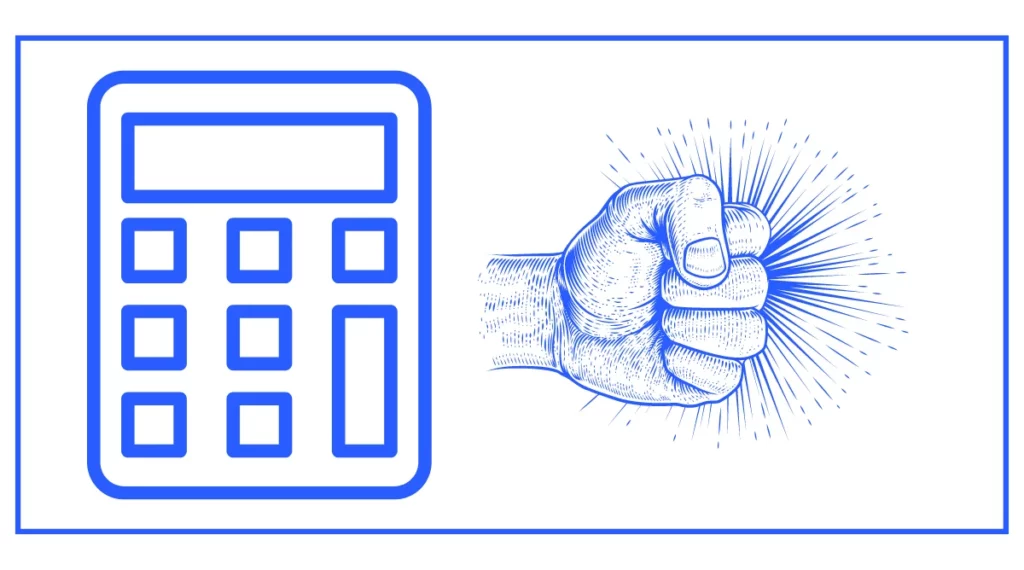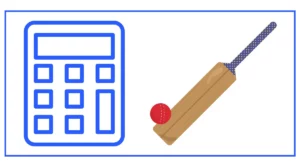Human Punch Force Calculator
Results:
Impact Force:
Punch Pressure:
Do you want to calculate your punch pressure or impact force?
This human punch force calculator helps you calculate the impact force and your punch pressure.
Simply enter your body weight, punch speed, delivery time, and surface area.
Oh no! Your punch pressure is so high. Do not hit anyone. Use this for sports purposes only. 😆

You might want to calculate the perfect windsurfing boards for you.
The Importance of Measuring Punching Force
Punching force is a critical aspect of combat sports, martial arts, and self-defense techniques. It's not just about raw strength; it's about the efficient transfer of energy from the body to the target. Understanding and calculating punching force can help athletes, trainers, and enthusiasts in several ways:
- Performance Improvement: By quantifying punch force, athletes can track their progress over time and identify areas for improvement.
- Training Optimization: Coaches can use punch force data to tailor training programs and focus on specific aspects of technique.
- Injury Prevention: Knowing the force generated by a punch can help in developing proper protective gear and training methods to reduce the risk of injury.
- Scientific Research: Researchers in sports science and biomechanics can use punch force calculations to study human performance and develop new training methodologies.
The Physics Behind a Punch
Before we dive into the calculator itself, it's essential to understand the physics that govern punching force. A punch is essentially an application of force over a short period, involving several key components:
- Mass: The mass of the fist and arm contributes to the overall force of the punch.
- Velocity: The speed at which the fist travels towards the target.
- Acceleration: The rate at which the fist's velocity changes during the punch.
- Time: The duration of impact when the fist strikes the target.
- Surface Area: The area of contact between the fist and the target.
These factors combine to determine the overall force and pressure of a punch, which can be calculated using various formulas derived from Newton's laws of motion.
Understanding the Human Punch Force Calculator
The human punch force calculator is a specialized tool designed to estimate the force generated by a punch based on input parameters. It takes into account various factors to provide a comprehensive analysis of punching power.
Key Components of the Calculator
- Body Weight: The mass of the person throwing the punch, typically measured in kilograms (kg).
- Punch Speed: The velocity of the fist at the moment of impact, measured in meters per second (m/s).
- Delivery Time: The time taken to execute the punch, measured in seconds.
- Surface Area: The area of impact, usually the surface area of the knuckles, measured in square centimeters (cm²).
How the Calculator Works
The punch force calculator uses these inputs to compute two primary outputs:
- Impact Force: This is the force exerted by the punch, measured in Newtons (N).
- Punch Pressure: The pressure applied at the point of impact, measured in Pascals (Pa).
The calculator employs fundamental physics principles, including Newton's second law of motion (F = ma) and pressure calculations, to derive these values.
Step-by-Step Guide to Using the Human Punch Force Calculator
To get the most accurate results from the punch force calculator, follow these steps:
Step 1: Determine Body Weight
Enter the body weight of the person throwing the punch in kilograms. This value is crucial as it represents the mass component in the force equation.
Step 2: Measure Punch Speed
Measure the velocity of the punch at the moment of impact. This can be done using a velocimeter or high-speed camera. Enter this value in meters per second.
Step 3: Calculate Delivery Time
Measure the time it takes to deliver the punch from the initial movement to impact. This can be done using a stopwatch or video analysis. Enter this value in seconds.
Step 4: Measure Surface Area
Determine the surface area of impact, typically the area of the knuckles that make contact with the target. Measure this in square centimeters.
Step 5: Input Values
Enter all the measured values into the corresponding fields in the calculator.
Step 6: Calculate
Click the "Calculate" button to generate the results.
Step 7: Interpret Results
The calculator will display the Impact Force in Newtons and the Punch Pressure in Pascals. These values provide a quantitative measure of the punch's power.
Step 8: Analyze and Apply
Use these results to analyze punching technique, compare different styles, or track improvement over time.
Factors Influencing Punching Force
Several factors can affect the force of a punch, beyond just the inputs used in the calculator:
- Technique: Proper punching technique can significantly increase force by optimizing the transfer of energy from the body to the fist.
- Body Mechanics: The rotation of the hips, shoulder engagement, and overall body alignment contribute to punch power.
- Muscle Strength: Strong muscles, particularly in the arms, shoulders, and core, can generate more force.
- Training: Regular practice and specific training exercises can improve punching power over time.
- Physical Condition: Overall fitness, including cardiovascular endurance, can affect punching force, especially in extended bouts.
- Psychological Factors: Confidence, focus, and mental preparation can influence the execution of a punch.
Practical Applications of the Punch Force Calculator
The human punch force calculator has numerous practical applications across various fields:
- Combat Sports Training: Boxers, MMA fighters, and martial artists can use the calculator to measure and improve their striking power.
- Self-Defense Instruction: Self-defense instructors can demonstrate the effectiveness of different techniques using quantitative data.
- Fitness Assessment: Trainers can use the calculator as part of overall fitness assessments for combat sports athletes.
- Equipment Testing: Manufacturers of boxing gloves, punching bags, and protective gear can use force calculations to test and improve their products.
- Medical Research: Researchers studying the biomechanics of punching or the effects of impact forces on the human body can benefit from this tool.
- Forensic Analysis: In some cases, forensic experts might use punch force calculations to analyze assault cases or reconstruct crime scenes.
Limitations and Considerations
While the human punch force calculator is a valuable tool, it's important to understand its limitations:
- Simplification: The calculator uses a simplified model of a complex biomechanical action. Real-world punches involve nuanced movements that may not be fully captured.
- Variability: Punch force can vary greatly depending on individual technique, even with the same input parameters.
- Impact Absorption: The calculator doesn't account for the target's ability to absorb or deflect force, which can affect the actual impact.
- Measurement Accuracy: The accuracy of the results depends on the precision of the input measurements, which can be challenging to obtain outside of a controlled setting.
- Dynamic Nature: A punch is a dynamic action, and the force can vary throughout the motion. The calculator provides an average or peak force estimate.
Enhancing Punching Power: Tips and Techniques
For those looking to improve their punching power, here are some tips that complement the use of the punch force calculator:
- Focus on Technique: Proper form ensures efficient energy transfer from the body to the fist. Work with a qualified instructor to refine your punching technique.
- Strengthen Core Muscles: A strong core helps generate more power and stability during a punch.
- Improve Hand and Wrist Strength: Strong hands and wrists can deliver more force and reduce the risk of injury.
- Practice Speed Drills: Increasing punch velocity can significantly boost overall force.
- Use Plyometric Exercises: These explosive movements can enhance the power and speed of your punches.
- Incorporate Rotational Exercises: Movements that mimic the rotational aspect of punching can improve overall punching power.
- Maintain Flexibility: Good flexibility, especially in the shoulders and hips, allows for a greater range of motion and potentially more powerful punches.






